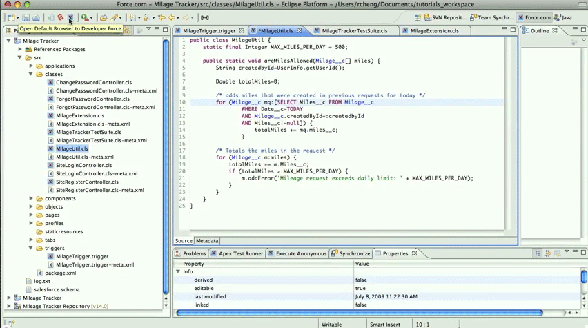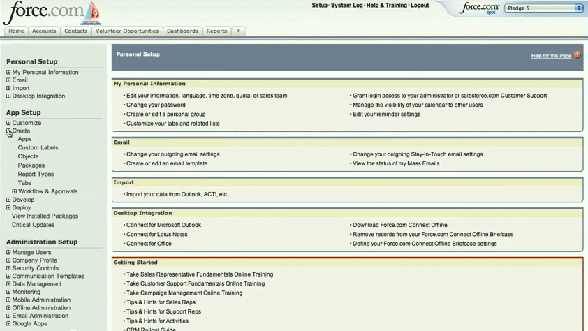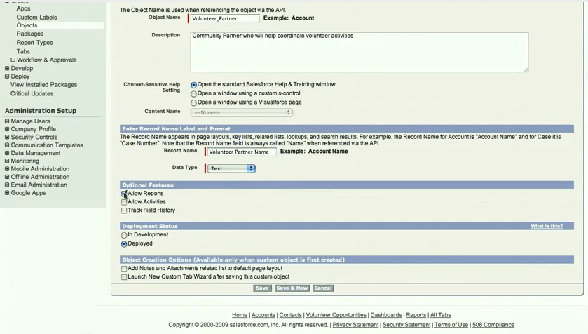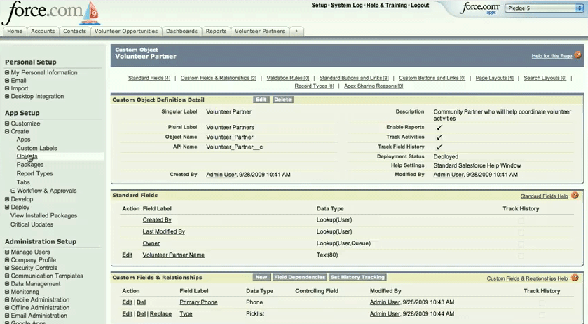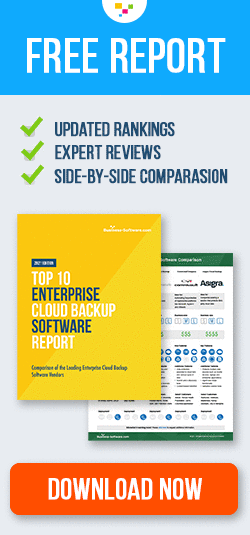Browse Business Software Categories
PAAS
Salesforce Force.com Review
Product Snapshot
Product Pricing
Contact vendor directly for pricing information.
Technology
Product is a cloud platform, meaning that there is no software or hardware to buy and manage, allowing businesses to focus on building powerful apps to improve their processes. Apps are run on a secure service where data is scaled, tuned, and backed up automatically.
Customer Focus
Product is an agile cloud platform suitable for the needs of any sized organization looking to develop apps.
Select Customers
Burberry, Avon, Zimmer, Wrigley, Caesars Entertainment
About Force.com
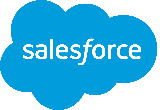 Force.com is a leading cloud platform to build and run custom social, mobile and real-time business apps. Over 240,000 apps have been built using the Force.com platform, including apps for workflow, analytics and other core business processes.
Force.com is a leading cloud platform to build and run custom social, mobile and real-time business apps. Over 240,000 apps have been built using the Force.com platform, including apps for workflow, analytics and other core business processes.
Companies can use this proven cloud platform to automate their processes and reinvent themselves into a social enterprise. More than 97,700 companies, including many industry leaders, trust in this software solution to help them quickly create and deploy applications that are agile, social, and mobile.
About the Company
Salesforce.com is the leading enterprise cloud computing company with a strong focus on the Social Enterprise—infusing a social context into the way businesses are run. Founded in 1999 by former Oracle executive Marc Benioff, Salesforce.com has gained recognition for its innovative products right from the start. Salesforce.com delivers a range of CRM and business applications that help companies improve the way their employees collaborate and the way they connect with customers.
Salesforce.com Acquisition History
- Sendia (April 2006) – now Force.com Mobile
- Kieden (August 2006) – now Salesforce for Google AdWords
- Kenlet (January 2007) – now Salesforce Ideas
- Koral (March 2007) – now Salesforce Content
- Instranet (August 2008) – now Salesforce Knowledge
- GroupSwim (December 2009) – now part of Salesforce Chatter
- Informavores (December 2009) – now Visual Workflow
- Jigsaw Data Corp. (April 2010) – now Data.com
- Sitemasher (June 2010)
- Navajo Security (August 2011)
- Activa Live Chat (September 2010)
- Heroku (December 2010)
- Etacts (December 2010)
- Dimdim (January 2011)
- Manymoon (February 2011)
- Radian6 (March 2011)
- Assistly (September 21, 2011)
- Model Metrics (November 2011)
- Rypple (Dec 2011)
Force.com Key Features
- Use minimal coding
- Leverage visual tools and a library of components to develop apps in a building-block manner
- Use open APIs to integrate apps
- Save time on development to solve problems and build your business
- Use a secure social network to promote collaboration with colleagues
- Use pre-built components and an enterprise framework for profiles, conversations, feeds, file sharing and updates
- Integrate with any custom app with REST APIs
- Use a secure cloud database and APIs to build native mobile apps
- Leverage the platform’s UI framework and HTML5 to build mobile-optimized browser apps with one code base
- Securely deliver apps on any mobile device
Salesforce.com Force.com Screenshots
Salesforce.com Force.com Videos

Pros
- Force.com is built with a broad range of development tools–so many that developers of various skills and skill levels will be able to easily develop a Force.com application with their preferred tools.
- Force.com uses its own proprietary development language, called Apex. Though some developers might balk at the idea of learning a new language, Apex is very similar to Java and C# and includes traditional C-style syntax. Apex also works similarly to other database languages like T-SQL and PL/SQL.
- If you don’t have the time or resources to write code, designers are available to create an application entirely on the Force.com website.
- Force.com applications are easily integrated with other cloud providers, such as Google App Engine and Amazon Web Services, and even with Facebook.
Cons
- Some developers and software vendors may not want to commit to a proprietary development environment that does not have the established reputation and maturity as Java/J2EE or Microsoft.NET.
- If developing on Force.com, developers may find themselves locked into using Salesforce.com technology since Salesforce.com CRM products do not have cloud portability.
Overall
Force.com offers developers robust cloud infrastructure components that include multi-tenant architecture, scalability and security, along with tools for social media and mobility. With Force.com, Salesforce.com customers can publish to their web site any data or applications that are stored in Force.com, lowering infrastructure costs while optimizing performance. Though some may not want to migrate to Salesforce.com’s proprietary development language, those who are comfortable with this migration may receive benefits such as lowered costs and streamlined IT processes.
Products Similar to Salesforce Force.com


